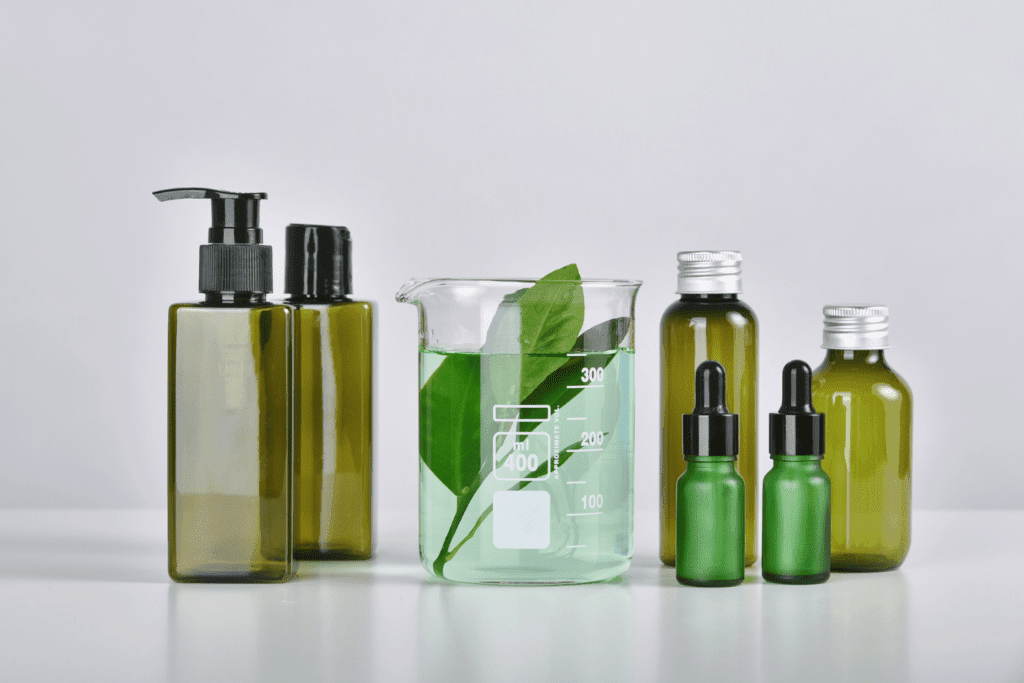This post contains affiliate links, meaning, at no additional cost to you, if you click through and make a purchase, I may receive a commission. I only share items that I truly love and use myself. For more information please see my disclosures here.
Be sure to listen to the
She’s Got It Together Podcast!
Why Personalized Skincare Matters
When it comes to skincare, one size definitely doesn’t fit all. The key to achieving healthy, radiant skin is understanding your unique skin type and tailoring your routine accordingly. In this ultimate guide, we’ll help you identify your skin type and create a personalized skincare regimen that will leave your skin looking and feeling its best.
Understanding the Different Skin Types
Before we dive into creating your perfect skincare routine, let’s take a closer look at the five main skin types:
- Normal: Balanced, not too oily or dry, and rarely sensitive.
- Oily: Shiny, prone to blemishes and enlarged pores.
- Dry: Feels tight and rough, may have visible flaking.
- Combination: Oily in the T-zone (forehead, nose, and chin) and dry or normal on the cheeks.
- Sensitive: Easily irritated, may sting or burn after product use.
How to Identify Your Skin Type
To determine your skin type, try this simple test:
- Wash your face with a gentle cleanser and pat dry.
- Wait an hour without applying any products.
- Observe how your skin feels and looks.
If your skin feels comfortable and doesn’t show signs of oiliness or dryness, you likely have normal skin. If it appears shiny and feels greasy, you have oily skin. If it feels tight and shows flaking, you have dry skin. If you notice a combination of oiliness in some areas and dryness in others, you have combination skin. If your skin easily becomes red, itchy, or stings, you may have sensitive skin.

Building Your Skincare Routine
Now that you know your skin type, it’s time to create your personalized skincare routine. A basic skincare routine consists of three main steps: cleansing, moisturizing, and sun protection. However, you can add additional steps, such as toning, exfoliating, and using serums or treatments, depending on your skin’s needs.
Step 1: Cleansing
Choose a cleanser suited to your skin type:
- Normal/Combination: Look for a gentle, balanced cleanser.
- Oily: Opt for a foaming or gel cleanser that helps control oil.
- Dry: Choose a creamy, hydrating cleanser.
- Sensitive: Select a fragrance-free, gentle cleanser.
Step 2: Moisturizing
Hydrate your skin with a moisturizer appropriate for your skin type:
- Normal/Combination: Use a lightweight, non-greasy moisturizer.
- Oily: Choose a water-based, oil-free moisturizer.
- Dry: Opt for a rich, emollient moisturizer.
- Sensitive: Select a fragrance-free, soothing moisturizer.
Step 3: Sun Protection
Protect your skin from harmful UV rays by applying a broad-spectrum sunscreen with at least SPF 30 daily, regardless of your skin type.
Additional Steps
- Toning: Use a toner to balance your skin’s pH and add an extra layer of hydration.
- Exfoliating: Remove dead skin cells and unclog pores with a gentle exfoliant 1-2 times per week.
- Serums and Treatments: Target specific skin concerns with specialized serums or treatments, such as vitamin C for brightening or retinol for anti-aging.
Consistency is Key
Creating a personalized skincare routine is the first step towards achieving healthy, glowing skin. However, the key to seeing results is consistency. Stick to your routine daily, and be patient – it can take several weeks to notice improvements in your skin.
Remember, your skin is unique, and what works for someone else may not work for you. Don’t be afraid to experiment with different products and adjust your routine as needed. With a little trial and error, you’ll find the perfect combination of products that leave your skin looking and feeling its best.
Happy skincare, gorgeous! Your path to radiant, healthy skin starts now.


